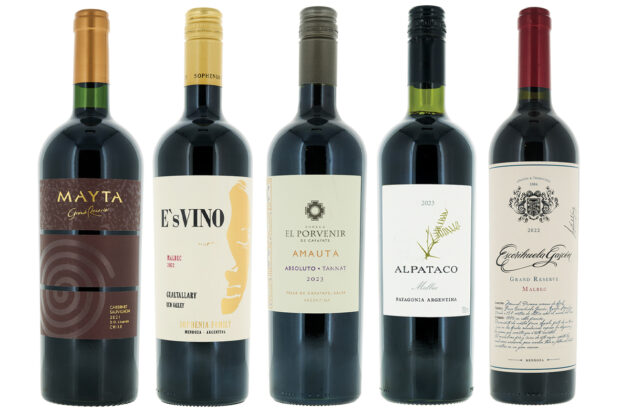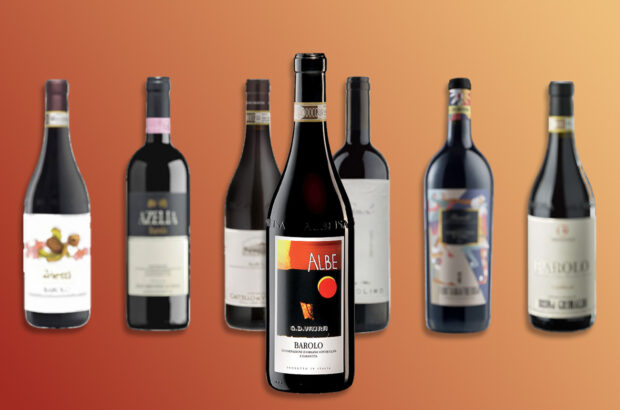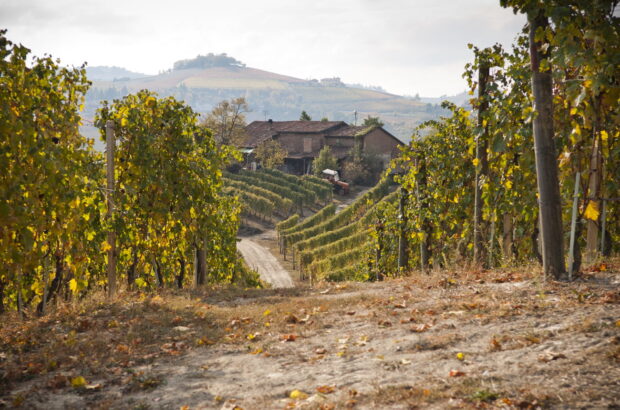Women have long collected art, they are also eminent collectors of luxury accessories and certainly of fashion, but what about wine? For the longest time, female wine collectors were the exception that proved the rule. Finally, though, women are breaking into this rarefied world. While progress is slow, there are clear reasons for this – not least psychology, wine styles and generational change.
A very male past

Serena Sutcliffe MW. Credit: Sotheby’s
‘The collecting world is the auction world,’ says Serena Sutcliffe MW, who started working at Sotheby’s in 1991 and rose to become global head of the auctioneer’s wine department until she retired from the role in 2015. She puts it succinctly: ‘Female wine collectors, a rare breed indeed.’ She notes: ‘The collecting world was 99% male when I started at Sotheby’s and has virtually remained the same. There have been very few women who built up wine collections in my entire auction career – a few powerful Asian women come to mind.’
Yet change is afoot. While Sotheby’s does not reveal figures, its press office notes that: ‘In 2022, Sotheby’s Global Wine & Spirits experienced year-on-year growth in lots purchased by women. This was driven by women collectors most prominently in North America, followed by Europe, then Asia.’
Figures from rival Christie’s show how small the female share still is and reveal different regional realities. In 2022, 10% of Christie’s bidders in wine were female, up from 8% in 2018. When weighted regionally, the west lags behind. Just 6% of buyers in the Americas and European markets were female while the figure for Asia-Pacific was 18%, despite 41% of global wine buyers now being below the age of 40 – a figure that climbs to 47% in Asia.

Véronique Sanders, president of Château Haut-Bailly
Experiences on the producer side were similar. When I ask Véronique Sanders, who became president of Château Haut-Bailly in Graves in 1991, how many wine dinners and promotional events she attended where she was the only woman, her answer is clear: ‘Hundreds of them.’ While this may differ in countries such as Japan, she agrees the wine-collecting world was almost entirely male in the past, but concedes ‘the feminisation of the wine world, at increasingly high levels, is a tangible reality, and it’s high time’. When I ask when female collectors first emerged, she counters: ‘Have they emerged yet? It is not obvious when you attend a collectors’ dinner. But if women are not yet collectors, we are seeing more and more women who are wine lovers.’
Tracking change

Queena Wong
There is increasing evidence, too, that the emergence of first Burgundy and then Champagne as much more coveted and collectible wines than they were 10 years ago has boosted female interest in the field. UK fine wine retailer Jeroboams reports that when it ran a campaign in partnership with Champagne Laurent-Perrier Grand Siècle through dedicated, personalised tastings in late 2022, a third of the 32 guests were women who were already collecting wine. London-based wine collector and activist Queena Wong, who started collecting in the mid-2000s, believes that ‘the accessibility of Champagne to purchase, and as a wine about joy, has encouraged women into wine – it definitely was the first arena in which I personally felt I was welcomed as an equal’. She makes this point because her experience of the social world surrounding fine wine collecting is mixed: ‘In some (not all) circles there were feelings of intimidation, marginalisation and occasions of sexual harassment. If I didn’t have strong foundations in wine, I would have been convinced that I was unable to do it.’ Have we not all been there?
Michele Munro, wine collector and founder member of the wine-centred private members’ club 67 Pall Mall, feels differently: ‘There are certainly more men than women who collect wine, but I can count my experiences of prejudice on one hand. They are memorable because of their rarity. My main grumble is that when I first meet someone, they assume my interest in wine is superficial. This tends to happen more when I meet men, whereas women ask questions and are keen to listen.’
Both Wong and Munro have done much to level the field. Wong has fostered a network of female collectors, while Munro has helped to create a space to meet. ‘In the few years since 67 Pall Mall opened, I’ve encountered more women wine lovers than ever before,’ she says. ‘I believe 67 has had a part to play in this because it’s a place we can find each other. The atmosphere is sociable and welcoming with no hint of snobbery. 67 was founded on equality and inclusion.’
A different approach

Hilary Green of Curated Wine Collections
Munro also stands out in another field. She holds the WSET Diploma in wines and spirits, a serious professional qualification, which points to a fundamental difference in approach. Wong makes a valuable point, noting that for women, ‘there is a lack of a social network around wine to share our collections and knowledge, so many turn to study to feed their wine interest’. Having no peer network, Wong adds, ‘inhibits our knowledge of how to buy wine better and the options out there. Women buy more for the love of wine rather than to invest’.
Hilary Green specialises in advising wine collectors through her consultancy Curated Wine Collections. Her client base is equally split into male and female collectors. She observes that ‘women are more likely to ask for guidance’, and that ‘male counterparts are more likely to rely on critic reviews or buy the same wines year on year’.
Green continues: ‘Women are more aware and/or honest about gaps in their knowledge of wine; the flip side to this is that they come across as less confident.’ She adds: ‘Women are less likely to express interest in wine investment. For my female clients, the investment potential of a collection is secondary to the collection itself, whereas I have a couple of male clients only interested in investment who consider their collections to be portfolios.’
George Lacey, director at Sotheby’s and its head of wine in Asia, agrees: ‘One thing I have found common among female collectors across international markets is that, generally, there is much more willingness to experiment, engage with new regions and styles and explore beyond the traditional confines of the most established fine wine regions.
‘I think this is because women are not so burdened by legacy and are therefore able to be more open-minded, as a direct result of how excluded they were from the wine-collecting community for so many years,’ Lacey explains. ‘They don’t have decades or even generations of in-built bias about which wines, producers, regions are most exciting, and so can often be more willing to explore.’
Munro concurs: ‘To generalise, women tend to collect knowledge and men veer towards physical ownership. Women trust their palates, whereas men are more label- and investment-driven.’
The crunch
Green also bluntly states that ‘women spend less’. This is where the psychology of collecting and hard finance either collide or converge. As Gareth Birchley, buying director at Burns & German Vintners and a fine wine market insider since 2006, explains: ‘In order to be a collector, rationale has to go out of the window. You end up with a wine collection that is 10 times what you can ever drink in your lifetime, but you are still buying wine. It’s kind of a strange concept, and I think I’ve always felt women were a lot more rational, not so led by their ego, more sensible. If you just buy enough wine to drink, you are never going to be in that category.’
This has two effects. One is that women may not be first in line for allocations. On release, the most coveted and collectible wines are only sold on allocation. Money alone no longer guarantees supply and cumulative spend over many years becomes the decisive factor. This means that women often miss out, not because of any direct discrimination or unconscious bias, but for the simple reason that merchants are under pressure to keep their biggest spenders happy. The other effect is that women then miss out on the biggest investment gains, as the ever-greater demand for fine wine with a finite supply drives prices up and creates the biggest returns. Munro is right when she says that ‘a seat at the table is earned – there are no shortcuts to high status in the world of wine collecting, irrespective of gender’.
Paradigm shifts

Vanessa Conlin MW. Credit: Colin Peck
The world, however, continues to change. A January 2020 report by fine wine think tank ARENI Global notes that female private wealth rose from US$34 trillion to $51 trillion between 2010 and 2015 and quotes research to suggest that by 2025, 53% of UK millionaires will be female. ‘Most private wealth that changes hands in the coming decades is likely to go to women,’ it states. Newer players are already aware.
Vanessa Conlin MW, Sotheby’s global head of wine retail, says: ‘I personally do not change the way I present wines or choose different wines to present to male clients versus female. I always ensure that I am engaging equally with both genders, and never presume that a male is more knowledgeable or has more disposable income than a woman client.’
Inevitably, as money moves, behaviour will follow. The fine wine market has already changed fundamentally, and while it’s slower to adapt than other spheres of luxury spending, the direction of travel is clear. Neither producers, merchants nor auctioneers will be able to afford to miss out on the female pound, dollar or renminbi.












